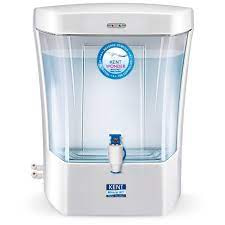Description
RO Water Purifier
Water is one of the basic necessities of life, and it is essential to have access to clean and safe drinking water. In today’s world, where pollution levels are on the rise, it has become increasingly challenging to get access to clean water. In this regard, RO water purifiers have become a popular choice for many households. They provide clean and safe drinking water by removing impurities and contaminants from the water. In this article, we will discuss everything you need to know about RO water purifiers, including their benefits, working, and maintenance.
What is an RO Water Purifier?
RO stands for Reverse Osmosis, which is a process used to purify water. An RO water purifier is a type of water filtration system that uses this process to remove impurities and contaminants from water. It uses a semi-permeable membrane to remove dissolved solids, chemicals, and other contaminants from the water. The result is clean and safe drinking water that is free from harmful impurities.
Benefits of RO Water Purifiers
RO water purifiers offer several benefits, including:
- Removes impurities and contaminants: RO water purifiers remove impurities and contaminants such as dissolved solids, chemicals, bacteria, and viruses from water, making it safe to drink.
- Improves taste and odor: RO water purifiers improve the taste and odor of water by removing impurities that cause unpleasant taste and odor.
- Easy to maintain: RO water purifiers are easy to maintain and require minimal maintenance. They typically require filter replacement every six months to one year.
- Cost-effective: RO water purifiers are cost-effective compared to other water purification systems such as UV water purifiers.
- Environmentally friendly: RO water purifiers do not require electricity, making them environmentally friendly.
How Does an RO Water Purifier Work?
RO water purifiers use a multi-stage filtration process to remove impurities and contaminants from water. The process typically involves the following stages:
- Sediment pre-filter: The first stage of the filtration process involves passing water through a sediment pre-filter, which removes larger particles such as sand, dust, and rust.
- Activated carbon pre-filter: The second stage involves passing water through an activated carbon pre-filter, which removes chlorine, pesticides, and other organic chemicals that affect the taste and odor of water.
- RO membrane: The third stage involves passing water through the RO membrane, which removes dissolved solids, chemicals, bacteria, and viruses from the water.
- Post-carbon filter: The final stage involves passing water through a post-carbon filter, which removes any remaining impurities and improves the taste and odor of water.
Maintenance of an RO Water Purifier
Proper maintenance of an RO water purifier is essential to ensure that it works efficiently and provides clean and safe drinking water. Here are some maintenance tips for an RO water purifier:
- Replace filters regularly: Filters in an RO water purifier need to be replaced regularly, typically every six months to one year.
- Clean the sediment pre-filter: The sediment pre-filter needs to be cleaned regularly to remove any sediment buildup.
- Sanitize the RO membrane: The RO membrane needs to be sanitized regularly to prevent the buildup of bacteria and other microorganisms.
- Check for leaks: Regularly check for any leaks in the RO system and fix them immediately to prevent water wastage.
Conclusion
An RO water purifier is an essential appliance for any household that wants to ensure access to clean and safe drinking water. With its multi-stage filtration process, an RO water purifier removes impurities and contaminants from water, making it safe to drink. Additionally, RO water purifiers are easy to maintain, cost effective, and environmentally friendly, making them a popular choice for many households. Proper maintenance of an RO water purifier is essential to ensure that it works efficiently and provides clean and safe drinking water.
Frequently Asked Questions
Here are some frequently asked questions about RO water purifiers:
1. Can an RO water purifier remove all impurities from water?
RO water purifiers are highly effective in removing impurities and contaminants from water. However, they may not remove certain types of impurities such as dissolved gases, some pesticides, and volatile organic compounds.
2. How often do I need to replace the filters in an RO water purifier?
Filters in an RO water purifier need to be replaced regularly, typically every six months to one year, depending on usage.
3. Do RO water purifiers require electricity to function?
RO water purifiers do not require electricity to function. They work on water pressure.
4. Can an RO water purifier waste water?
RO water purifiers produce some wastewater during the purification process. However, modern RO water purifiers are designed to minimize water wastage.
5. Can I install an RO water purifier myself?
While it is possible to install an RO water purifier yourself, it is recommended to have it installed by a professional to ensure that it is installed correctly and functions efficiently.








Aqua Filter –
Aquaafilter is the go-to company for anyone in need of water filter installation or maintenance services. Their staff is knowledgeable, friendly, and always willing to help.